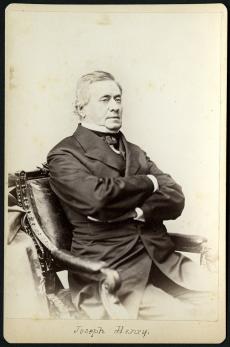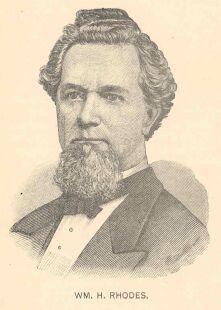
"Truth is stranger than fiction" is the adage that immediately came to mind when I stumbled across this odd bit of Smithsonian history. In 1848, first Smithsonian Secretary Joseph Henry helped write a proposal to create an International Board of Subterranean Exploration. This joint endeavor between the United States, Great Britain, France, Russia, and Belgium aimed to test Gottfried Wilhelm Leibniz’s theory that the Earth’s core was molten. Additionally, the explorations would seek to uncover the magnetic condition of the earth’s crust and to analyze coal measures. Joseph Henry was noted for his pioneering research into magnetic phenomena, so this was a topic that interested him.

To begin their work, the commission decided the best way to explore the subterreanean parts of of our world would be to excavate a shaft into the center of Earth. The report stated that the committee selected a site in Bruges, Belgium, and commenced digging on April 10, 1849. For more than twenty years, men of science worked at the site drilling with diamond-pointed instruments and taking measurements of all kinds. They learned about magnetic forces and the make-up of the Earth’s crust. Then, one fateful November night in 1872 the project went up in flames! In the wee hours of the morning, men at the site heard a series of explosions. Waves of heat, thunderous sounds and ash erupted throughout the region. Soon, molten lava sprung from the shaft and destroyed everything in its wake.
The devastating results of this search for knowledge is almost hard to believe. In fact, I hope you didn't . . .
APRIL FOOLS!!!
In truth, we did come across this bizarre article mentioning Joseph Henry. However, it turns out that this and several others like it are the collective writings of William Henry Rhodes, or “Caxton.” Rhodes, a lawyer by trade, wrote a series of science fiction hoaxes that were published in newspapers around the country. He first published a hoax piece, The Case of Summerfield, in 1871 in The Sacramento Union. This piece was written as a report on a man who threatened to set the world’s oceans on fire using chemicals unless he was paid one million dollars. For a few days people were in a state of panic until The Sacramento Reporter unveiled the story as a hoax and, for the most part, people were amused by the prank.
Rhodes continued to write and in 1872 produced the The Earth’s Hot Center. This time the hoax was presented as extracts from a report written by John Flannagan, United States Consul at Bruges, to the United States Secretary of State, Hamilton Fish. It told the harrowing tale of scientists going too far and creating a volcano in the middle of Belgium. Although parts of the story may seem fantastical today, Rhodes’ use of prominent names such as Henry, Fish, and Roderick Murchison, a noted Scottish geologist; organizations like the Smithsonian; and his understanding of the scientific theories prevalant at the time helped create a masterful story that initially hoodwinked his readership until the deception was revealed. Secretary Joseph Henry was quite a serious fellow, and we don’t know his reaction, but we hope he enjoyed this bit of notoriety.
P.S. The image of the “excavation site” is actually an image of the Parícutin volcano in Mexico in 1943 taken by Smithsonian curator of minerals William Foshag. The image of Henry . . . well, that is actually him.
Related Resources
- Caxton's Book: A Collection of Essays, Poems, Tales and Sketches, William Henry Rhodes, ed. Daniel O’Connell, (A. L. Bancroft and Company: San Francisco, CA) 1876.
- Caxton's Book: A Collection of Essays, Poems, Tales and Sketches, William Henry Rhodes, Introduction by Sam Moskowitz (Hyperion Press: Westpore, CT) 1974.
Produced by the Smithsonian Institution Archives. For copyright questions, please see the Terms of Use.


Leave a Comment